Ditapis dengan
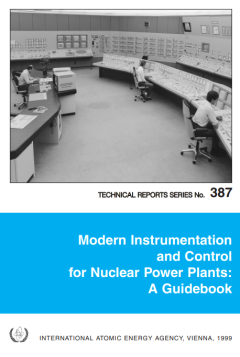
Modern Instrumentation and Control for Nuclear Power Plants | Technical Repor…
This report replaces Technical Reports Series No. 239, Nuclear Power Plant Instrumentation and Control: A Guidebook (1984), in particular by changing the emphasis from guidance to summarizing operating experience and discussing new technologies. It provides an up to date overview of nuclear power plant instrumentation and control technology and the background against which such systems are impl…
- Edisi
- 387
- ISBN/ISSN
- 92-0-101199-7
- Deskripsi Fisik
- 629p,
- Judul Seri
- -
- No. Panggil
- 621.483 IAE M

Regulatory Control of Radiation Sources | IAEA Safety Standards Series No. GS…
This Safety Guide is intended to assist States in implementing the requirements established in Safety Standards Series No. GS-R-1, Legal and Governmental Infrastructure for Nuclear, Radiation, Radioactive Waste and Transport Safety, for a national regulatory infrastructure to regulate any practice involving radiation sources in medicine, industry, research, agriculture and education. The Safety…
- Edisi
- GS-G-1.5
- ISBN/ISSN
- 92-0-105004-6
- Deskripsi Fisik
- 67p, 575kb
- Judul Seri
- -
- No. Panggil
- 374 IAE R
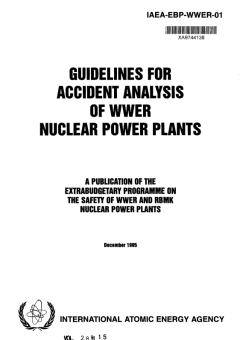
Guidelines for accident analysis of WWER nuclear power plants
The need for detailed guidance in the performance and review of accident analysis for WWER nuclear power plants has been identified as a priority within the IAEA Extrabudgetary Programme on Safety of WWER and RBMK NPPs. The present guidelines were developed through the organization of three consultants meetings in 1994 and 1995. The guidelines deal with the transient and accident analysis re…
- Edisi
- -
- ISBN/ISSN
- -
- Deskripsi Fisik
- 136p
- Judul Seri
- -
- No. Panggil
- 621.4835 IAE G
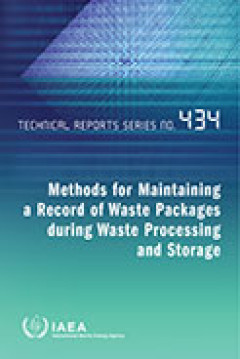
Methods for Maintaining a Record of Waste Packages during Waste Processing an…
During processing, radioactive waste is converted into waste packages and sent for storage and ultimately for disposal. A principal condition for acceptance of a waste package for storage or disposal is its full compliance with waste acceptance criteria for disposal or storage. To declare compliance of a waste package with waste acceptance criteria, a system for generating and maintaining recor…
- Edisi
- -
- ISBN/ISSN
- 92-0-114704-X
- Deskripsi Fisik
- 37 pages, 332KB
- Judul Seri
- -
- No. Panggil
- 621.4838 IAE M
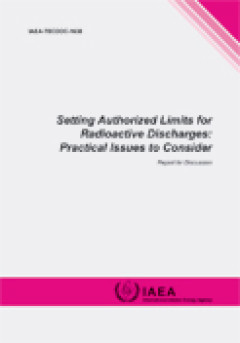
Setting Authorized Limits for Radioactive Discharges: Practical Issues to Con…
This publication provides an overview of the practical aspects related to the implementation of programmes for protection of people and the environment from radiological effects of authorized radioactive discharges. It includes a description of the main processes involved in setting discharge authorizations and presents examples of current practice drawn from national experiences in activities …
- Edisi
- 1638
- ISBN/ISSN
- 978-92-0-114909-1
- Deskripsi Fisik
- 80p.;1.12MB
- Judul Seri
- -
- No. Panggil
- 621.48 IAE S
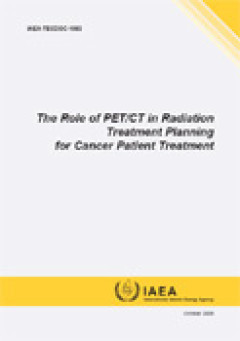
The Role of PET/CT in Radiation Treatment Planning for Cancer Patient Treatme…
This publication is a resource for specialists in nuclear medicine and radiation oncology on the coupling of positron emission tomography and X ray computed tomography (PET/CT) to more accurately identify cancer cells within the body. Besides, although radiation therapy plays an important role in cancer treatment as an effective non-invasive therapy, damage to normal cells in the vicinity of tu…
- Edisi
- 1603
- ISBN/ISSN
- 978–92–0–110408–3 / 1011–4289
- Deskripsi Fisik
- 40 p.;474kb
- Judul Seri
- -
- No. Panggil
- 616.99406 IAE T
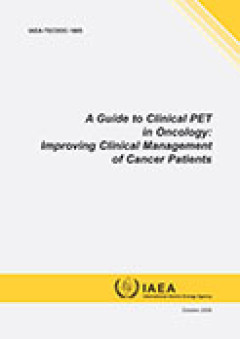
A Guide to Clinical PET in Oncology: Improving Clinical Management of Cancer …
This publication is intended to assist health managers, nuclear medicine physicians and referring physicians involved in the management of cancer patients through further application of positron emission tomography (PET) technology. PET is currently used in conjunction with computed tomography (PET/CT), 18F-fluorodeoxyglucose (18F-FDG) and other radiopharmaceuticals to detect and target cancer …
- Edisi
- 1605
- ISBN/ISSN
- 978–92–0–110608–7 / 1011–4289
- Deskripsi Fisik
- 60 p.;730kb
- Judul Seri
- -
- No. Panggil
- 616.994075 IAE A
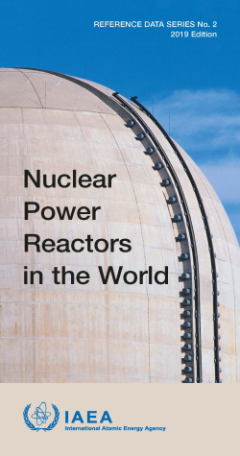
Nuclear Power Reactors in the World Edition 2019 - Reference Data Series No. 2
This is a collection of references about nuclear power reactors in the world 2019. Published by the IAEA in 2019. This document contains a lot of statistical data in the form of tables such as from construction to operation from various IAEA member countries. Final data is taken until 2018 (MM). Keyword: nuclear power reactor, IAEA, nuclear reactor
- Edisi
- -
- ISBN/ISSN
- 978-92-0-102719-1
- Deskripsi Fisik
- 80 Halaman
- Judul Seri
- -
- No. Panggil
- 621.483 IAE N
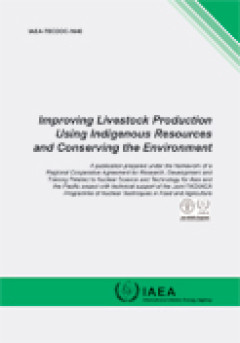
Improving Livestock Production Using Indigenous Resources and Conserving the …
This publication was produced under an IAEA technical cooperation project and includes information on: livestock feeding and breeding strategies in Asia; enteric methane emission mitigation strategies; a systems approach to sustainable livestock production and manure management; processing and handling of manure to reduce pollution and improve nutrient utilization; and field application and uti…
- Edisi
- 1640
- ISBN/ISSN
- 978-92-0-100310-2
- Deskripsi Fisik
- 173 p
- Judul Seri
- -
- No. Panggil
- 636.20096 IAE L
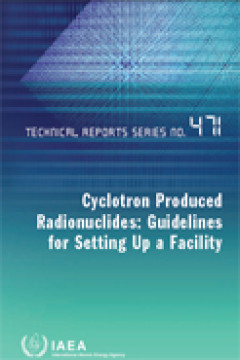
Cyclotron Produced Radionuclides: Guidelines for Setting Up a Facility | Tech…
Cyclotrons are used for preparation of a wide variety of radionuclides that find application in single photon emission computed tomography (SPECT) as well as in positron emission tomography (PET). This publication gives comprehensive guidelines for the planning and decision making processes and design and implementation of a cyclotron based radionuclide production facility. It will enable Membe…
- Edisi
- 471
- ISBN/ISSN
- 978-92-0-103109-9
- Deskripsi Fisik
- 229 p
- Judul Seri
- -
- No. Panggil
- 621.4837 IAE C
 Karya Umum
Karya Umum  Filsafat
Filsafat  Agama
Agama  Ilmu-ilmu Sosial
Ilmu-ilmu Sosial  Bahasa
Bahasa  Ilmu-ilmu Murni
Ilmu-ilmu Murni  Ilmu-ilmu Terapan
Ilmu-ilmu Terapan  Kesenian, Hiburan, dan Olahraga
Kesenian, Hiburan, dan Olahraga  Kesusastraan
Kesusastraan  Geografi dan Sejarah
Geografi dan Sejarah